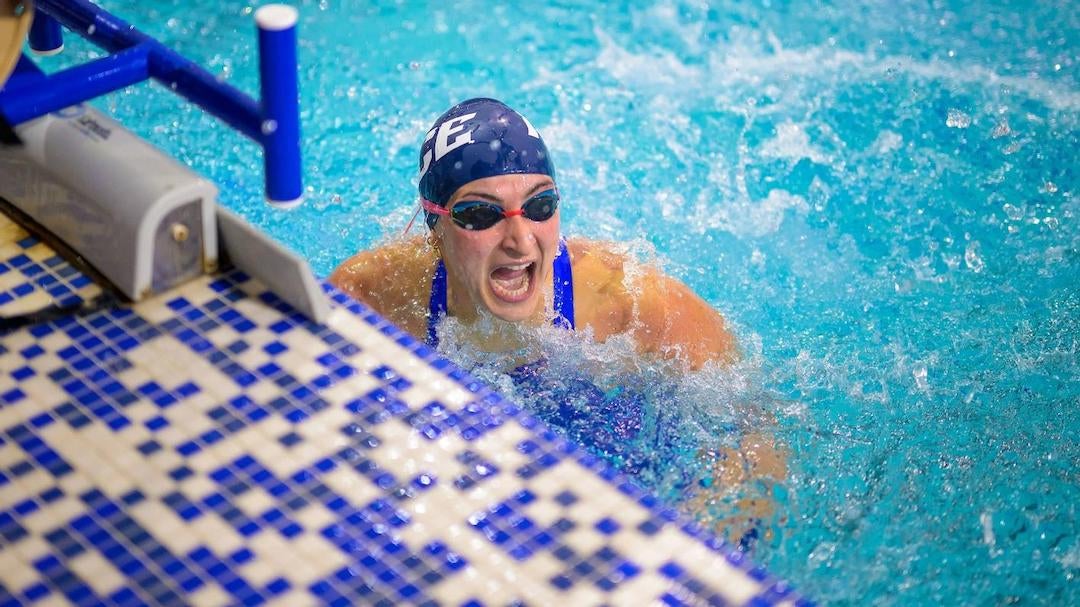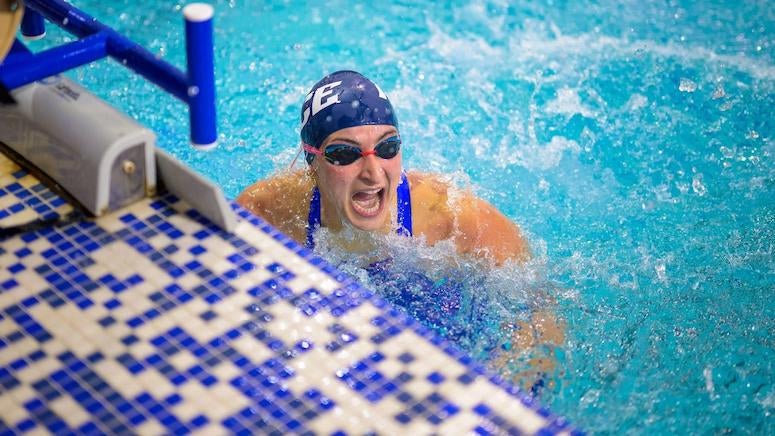The Rice Owls swimming team got an early taste of championship play in the American Athletic Conference last week, as the rest of the university’s programs prepare to make the leap later this year.
Though Rice’s transition from Conference USA to the AAC doesn’t officially take place until July, the swimming team was given the opportunity to compete in the AAC as an affiliate member during the 2022-2023 season due to C-USA being unable to host a championship. All of the current C-USA members who sponsor women’s swimming and are moving to the AAC were able to enter early.

This made the team the first in Rice history to compete in an AAC Championship, which concluded this past Saturday.
While the University of Houston took the team title, Rice captured four individual gold medals, with Arielle Hayon winning the 100- and 200-yard butterflies, Ella Dyson the 1,650 freestyle and Zoe Spitz the 100 backstroke.
“I’m grateful to the AAC for accepting us early, or otherwise we wouldn’t have had a championship to compete in,” Rice Athletic Director Joe Karlgaard said.
The AAC trial run has been a good way for the swimming team to evaluate the depth of talent in the AAC, head coach Seth Huston said.
“It’s definitely unique,” he said. “What I think is great is that in the AAC the competitiveness is higher. It’s a much deeper conference for us in swimming. There are going to be nine teams competing, and in the Conference USA, there were only six.”
Spitz, who holds the school record for the 100 and 200 backstroke, said while the water remains the same, being in a new conference brings a new level of energy while competing.
“The swimming is the same. You’re still swimming up and down that same pool. But it’s just exciting to be able to race new teams,” she said.
Competing in the AAC Championships also gave the swimmers their first and only opportunity to face Houston in a postseason setting, even. The Cougars are moving to the Big 12 Conference in July.
“It’s great to swim against your crosstown rival in the same conference that you’re at. We’re excited about that, for sure,” Huston said a few days before the meet.
Karlgaard said he thinks the transition to the American will forge new rivalries for Rice and rekindle some old ones.
“We’ve been in Conference USA since the mid-2000s, and while I really like the set of partners that we have, we don’t have histories with our current set of partners,” he said. “So, the move to the American Athletic Conference is an opportunity for us to get back with some of our regional partners like SMU, an academic member of the AAU, another private institution like Tulsa and another selective academic institution like the Naval Academy.
“And I think that will resonate with our fans and with our student body, and hopefully get people more engaged in what we’re doing over here in athletics.”
The move also looks to be an upgrade for Rice when it comes to exposure and recruiting, largely due to the AAC’s television contract with ESPN.
“As far as exposure is concerned, the opportunity to play on ESPN in multiple sports — that’s going to allow our athletes to be seen, and I think it fits really nicely into our national and global footprint as an institution,” Karlgaard said. “If we’ve got an athlete from Washington State, New England, Southern California or Miami and all points in between, they can see their sons and daughters play as part of that television package that we’re entering into. That’s exciting for us, and I think it’s a way to proliferate the Rice brand and try to grow as an institution, not just as an athletic partner.”

